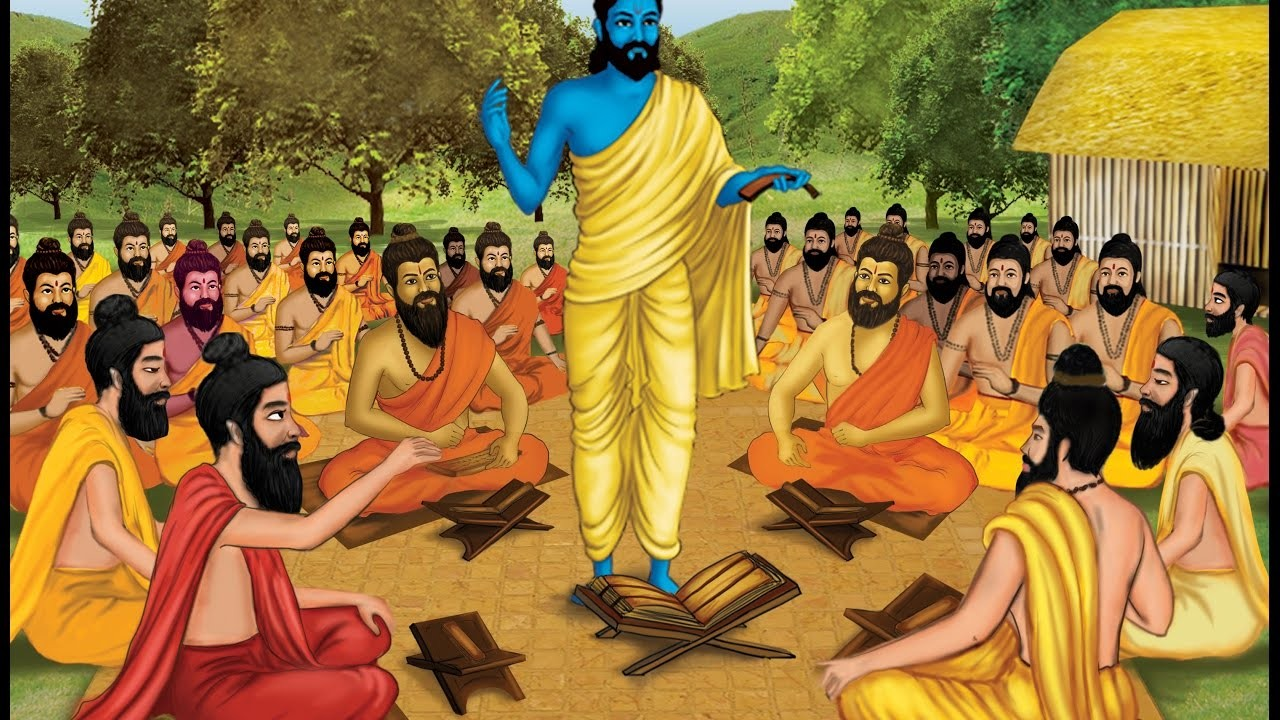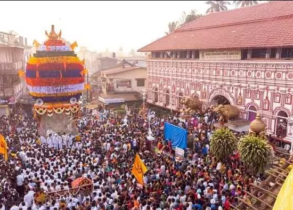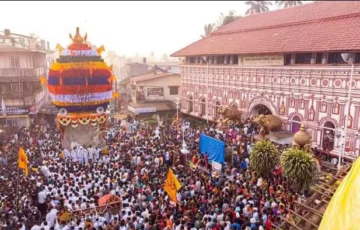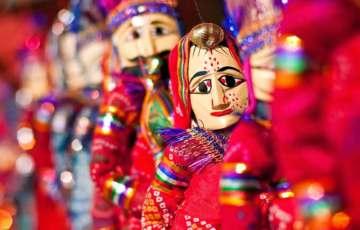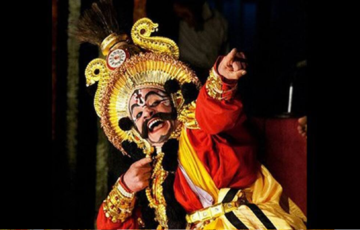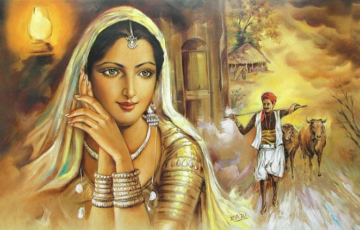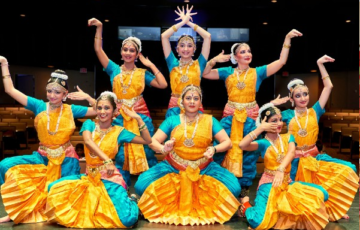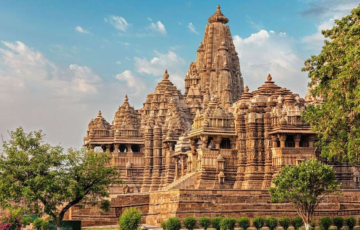INDIAN SCHOOLS OF PHILOSOPHY
Introduction
- In the intricate historical narrative of ancient India, a profound fusion of literary expression and philosophical inquiry unfolded. Within this intellectual landscape, a myriad of thinkers embarked on profound explorations into the fundamental aspects of existence, delving into the mysteries of life, death, and metaphysical forces that transcended the boundaries of human understanding. Notably, the boundary between religious convictions and the philosophical tenets they championed often blurred, fostering a symbiotic relationship between these realms.
- The emergence of distinct philosophical schools unfolded against the dynamic backdrop of social evolution in the Indian sub-continent. This transformative process found its anchor in the meticulous establishment of a structured social order. Anchored in both the governance structures of the State and the stratified divisions of varna, this societal framework provided fertile ground for the nuanced development and expression of diverse philosophical perspectives. With the maturation of this social order, the contours of each philosophical school became more perceptible, weaving a rich tapestry of intellectual diversity that echoes through the chronicles of Indian philosophical history.
Foundational Principle Upheld by the Major Philosophical Schools
- The foundational principle upheld by the major philosophical schools of ancient India centered on the pursuit of four indispensable life goals, each playing a pivotal role in cultivating a comprehensive understanding of human existence:
- Artha – Economic Means or Wealth: The Arthashastra extensively explored matters related to economic well-being and the accumulation of wealth, offering a thorough examination of economic principles. This treatise aimed to provide individuals with a holistic understanding of financial prosperity, guiding them through the intricate realms of economic life.
- Dharma – Regulation of Social Orders: Serving as the linchpin for discussions on ethical and moral principles governing social orders and the State, the Dharmashastra intricately addressed the proper conduct and duties within society. It emphasized the significance of ethical living, fostering a harmonious and just social framework rooted in the principles of righteousness.
- Kama – Physical Pleasures or Love: The Kamashastra and Kamasutra delved into the exploration of physical pleasures and the subtleties of love. These works provided profound insights into the art of love and the nuanced dimensions of sexual pleasure, enriching the understanding of human relationships and the complexities of interpersonal dynamics.
- Moksha – Salvation: Within the Darshana tradition, philosophical texts contemplated the concept of Moksha, accentuating the pursuit of spiritual liberation or salvation. These treatises engaged in profound discussions on the nature of existence, offering guidance to individuals on the transformative path toward ultimate freedom and transcendence from the cycle of worldly existence.
- These four life goals collectively embraced the diverse facets of human experience, encompassing economic prosperity, ethical conduct, the pursuit of physical pleasure, and the profound quest for spiritual salvation. Each goal found its elucidation within specific treatises and philosophical texts, weaving a tapestry of ancient Indian thought that contributes to a holistic and nuanced comprehension of human existence in its multifaceted dimensions.
Philosophical Schools
- In the collective journey of various philosophical schools toward the pursuit of the four fundamental life goals, a shared overarching ambition emerged—to attain liberation from the cyclical nature of birth and death. As time unfolded, distinctions surfaced among specific schools regarding the pathways to achieve salvation. By the advent of the Christian Era, two prominent schools of philosophy gained prominence:
Orthodox School:
This school fervently championed the supremacy of the Vedas, deeming them as the ultimate revealed scriptures containing the key to salvation. Without questioning the authenticity of the Vedas, the Orthodox School comprised six subschools collectively known as the Shada Darshana: Samkhya, Yoga, Nyaya, Veisheshika, Mimamsa, and Vedanta.
Heterodox School:
Diverging from the orthodox standpoint, the Heterodox School rejected the originality of the Vedas and raised queries about the existence of God. It encompassed three major sub-schools:
- Buddhism: Defying Vedic authority, Buddhism charted its path to enlightenment through the Four Noble Truths and the Eightfold Path.
- Jainism: Aligning with Buddhism, Jainism veered away from Vedic traditions, emphasizing non-violence (ahimsa) and the pursuit of spiritual purity.
- Lokayata: Also known as Carvaka, this school dismissed the validity of the Vedas and the existence of the supernatural, advocating for a materialistic and atheistic worldview.
Six Orthodox Schools (Classical Schools) of Indian Philosophy
- The classical Indian philosophical panorama is enriched by the presence of six orthodox schools, collectively known as the Shad Darshana. Each of these schools contributes a unique perspective, weaving a diverse tapestry of philosophical thought in ancient India. They converge in acknowledging principles such as karma, rebirth, and the ultimate goal of moksha, signifying liberation from the cycle of births and deaths.
Sankhya Philosophy:
- Acknowledged as the oldest school, credited to Kapila.
- Provides a materialistic ontology that influences Nyaya and Vaisheshik.
- Embraces dualism, emphasizing the duality of purush (spirit) and prakriti (nature).
- Emphasizes the pursuit of self-knowledge for liberation through concentration and meditation.
- Serves as the foundational basis for the Yoga philosophy.
Yoga Philosophy:
- Founded by Patanjali.
- Proposes a practical path for self-realization through physical and mental discipline.
- Highlights the release of Purush from Prakriti through disciplined practices.
- Adopts a practical approach to self-realization without mandating a belief in God.
Nyaya Philosophy:
- Established by Gautam.
- Upholds reason and experience as the foundation for accepting truth.
- Rejects monist views and affirms the reality of the world.
- Relies on pramanas (means of obtaining true knowledge), with pratyaksha pramana (knowledge through the senses) as the principal means.
Vaisheshik Philosophy:
- Ancient physics expounding the atomic theory, attributed to Kannada.
- Initially considered part of Nyaya philosophy but later emerged as a distinct entity.
- Represents a realistic and objective philosophy of the universe.
Purva Mimamsa (Mimamsa):
- Definition: Signifies thorough analysis and understanding.
- Focus: Delves into Vedic teachings, specifically karma-kanda rituals.
- System: Referred to as Purva Mimamsa, part of the karma-mimamsa system.
- Emphasis: Significantly emphasizes yagya (ritual sacrifice) for spiritual and worldly benefits.
- Reliance: Grounded in the Brahmana (and Samhita) part of the Vedas.
Uttara Mimamsa (Vedanta):
- Concept of Maya: Posits the world as unreal, characterized by Maya.
- Monism: Asserts monism, recognizing only one reality, Brahman.
- Emphasis: Focuses on brahmagyan (knowledge of Brahman) and relies on the Upanishad part of the Vedas.
- Roots: Philosophical roots trace back to Sankhya Philosophy.
- Sub-branches within Vedanta:
- Absolute Monism of Shankara:
- Advocated by Adi Shankaracharya.
- Emphasizes the absolute oneness of Brahman, viewing the world as an illusion (Maya).
- Stresses the importance of knowledge (jnana) for liberation (moksha).
- Vishishtha Advaita or Qualified Monism of Ramanuja:
- Proposed by Ramanuja.
- Introduces qualified monism, acknowledging a distinct yet intimate relationship between the individual soul and Brahman.
- Emphasizes devotion (bhakti) for liberation.
- Dvaita of Madhva:
- Founded by Madhvacharya.
- Advocates dualism, positing a clear distinction between the individual soul, the material world, and the Supreme Reality (Brahman).
- Emphasizes devotion (bhakti) and the grace of God for liberation.
Three Heterodox Schools of Indian Philosophy:
- Carvaka (Lokayata):
- Characterization: Embraces a materialistic and atheistic worldview.
- Methodology: Advocates direct perception as the most reliable method for establishing the truth.
- Emphasis: Places a strong emphasis on leading a life focused on joy and worldly experiences.
- Alternate Name: Also referred to as Lokayata.
- Founder: Attributed to Carvaka, author of the Barhaspatya Sutras during the final centuries B.C.
- Buddhist Philosophy:
- Beliefs: Rooted in the teachings of Siddhartha Gautama.
- Theistic Stance: Characterized as a non-theistic philosophy; the existence or non-existence of God is not a central concern.
- Four Noble Truths:
- There is suffering.
- There is a cause of suffering.
- There is a cessation of suffering.
- There is a way to the cessation of suffering.
- Eight Principles for Nirvana:
- Right Faith (Samyak Dristi).
- Right Resolve (Samyak Sankalpa).
- Right Speech (Samyak Vakya).
- Right Action (Samyak Karmanta).
- Right Living (Samyak Ajiva).
- Right Thought (Samyak Smriti).
- Right Concentration (Samyak Samadhi).
- Right Effort (Samyak Vyayama).
- Jain Philosophy:
- Origins: Traces its roots back to the 6th century B.C., experiencing a revival under Mahavira, the 24th Jain Tirthankara.
- Liberation: Attained through adherence to the three jewels: Right Philosophy, Right Knowledge, and Right Conduct (Tri-ratna).
- Right Conduct: Encompasses five abstinences: refraining from lying, stealing, seeking luxury and possessions, engaging in unchaste behavior, and causing harm (Ahimsa).
- Ajivika Philosophy:
- Classification: Some categorize it within the heterodox system.
- Nature: Represents an ascetic movement during the Mahajanapada period in the Indian subcontinent.
- Prominent Figures: Associated with figures such as Makkhali Gosala and Sanjaya Belatthaputta.
- Organization: Perceived as a loosely structured group of wandering ascetics, known as shramanas or sannyasins.
- Four Noble Truths:
UPSC PREVIOUS YEAR QUESTIONS
1. “Souls are not only the property of animal and plant life, but also of rocks, running water and many other natural objects not looked on as living by other religious sects.”
The above statement reflects one of the core beliefs of which one of the following religious sects of ancient India? (2023)
(a) Buddhism
(b) Jainism
(c) Shaivism
(d) Vaishnavism
2. With reference to the religious history of India, consider the following statements: (2016)
1. The concept of Bodhisattva is central to the Hinayana sect of Buddhism.
2. Bodhisattva is a compassionate one on his way to enlightenment.
3. Bodhisattva delays achieving his own salvation to help all sentient beings on their path to it.
Which of the statements given above is/are correct?
(a) 1 only
(b) 2 and 3 only
(c) 2 only
(d) 1, 2 and 3
3. Which one of the following pairs does not form part of the six systems of Indian Philosophy? (2014)
(a) Mimamsa and Vedanta
(b) Nyaya and Vaisheshika
(c) Lokayata and Kapalika
(d) Sankhya and Yoga
4. With reference to the history of philosophical thought in India, consider the following statements regarding Sankhya school: (2013)
1. Sankhya does not accept the theory of rebirth or transmigration of the soul.
2. Sankhya holds that it is the self-knowledge that leads to liberation and not any exterior influence or agent.
Which of the statements given above is/are correct?
(a) 1 only
(b) 2 only
(c) Both 1 and 2
(d) Neither 1 nor 2
5. Which of the following statements is/are applicable to Jain doctrine? (2013)
1. The surest way of annihilating Karma is to practise penance.
2. Every object, even the smallest particle, has a soul.
3. Karma is the bane of the soul and must be ended.
Select the correct answer using the codes given below:
(a) 1 only
(b) 2 and 3 only
(c) 1 and 3 only
(d) 1, 2 and 3
6. The Jain philosophy holds that the world is created and maintained by: (2011)
(a) Universal law
(b) Universal Truth
(c) Universal Faith
(d) Universal Soul
7. What are the main features of Vedic society and religion? Do you think some of the features are still prevailing in Indian society? (2023)
8. Indian philosophy and tradition played a significant role in conceiving and shaping the monuments and their art in India. Discuss. (2020)

